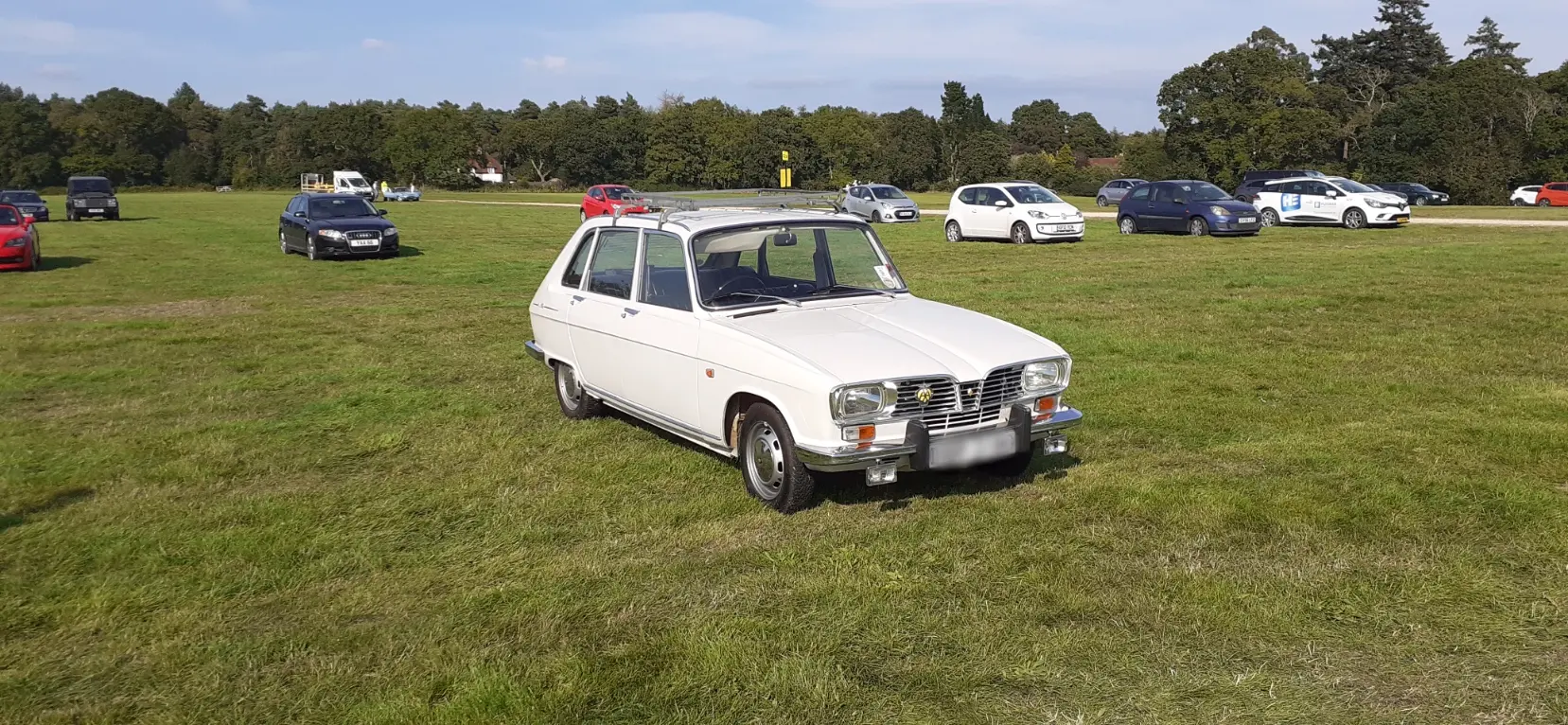The 20th of October 1965 – The Renault 16 Makes Its UK Debut
22 October 2025

It is the autumn of 1965, and you are in the market for a new car. Your budget is £1,000 and, having reached a certain professional standing, you might even consider a ‘Continental’ vehicle. Then, on Stand 106 at the London Motor Show on the 20th of October, the Renault 16 makes its UK debut – and you are instantly fascinated by its very appearance. Two months later, you read an advertisement in Autocar promising “The Renault 16 is a new breed of car for the new man”.
Renault GB further invited the reader to “Compare the looks of the new Renault 16 with other 1.5-litre cars. Makes them look dowdy, doesn’t it?” Subjective though matters of taste surely are, it did indeed look utterly different from any UK-built car of that era. The Ford Corsair, the Singer Vogue, and the FC-Series Vauxhall Victor 101 were all rear-wheel-drive ‘three box’ saloons with quasi-American lines.
The Singer and the Vauxhall were also available in factory-built estate form, which again had faint Detroit overtones. Meanwhile, the Renault combined the merits of a saloon and a station wagon. On the 20th of October 1965, The Daily Telegraph wrote: “The makers think that its saloon-cum-estate make-up will set a new fashion trend”.
As for the British Motor Corporation, the Wolseley 16/60 was even more conventional than the Ford, Singer or Vauxhall; it seemed to be aimed at motorists who regarded The Archers as dangerously radical. The Austin 1800 ‘Landcrab’ seemed a closer rival to the 16 with its individualistic styling and front-wheel-drive layout – but there was neither a fifth door nor the choice of seven different seating configurations.
A visit to your friendly local Renault dealer was clearly in order, where you would be mesmerised by talk of the 16’s asymmetrical wheelbase and sheer versatility. As Yves Dubreil wrote for Renault Histoire, the company’s market analysis showed: “here was a rather young potential clientele looking for a multi-purpose car adapted to the new uses of leisure, second homes, family travel or transporting various objects”.
The challenge for Renault GB was to ensure a similar customer base in the UK. Fortunately, the 16 appealed to the likes of our 1965-vintage driver - those affluent motorists who liked to don the roll-neck pullover/sunglasses look when dining at the local bistro. The De Luxe version cost £888 9s 7d, but a customer of their social standing clearly needed to invest £948 17s 11d in a Grand Luxe with its separate front seats and cigar lighter.

Of course, the Singer Vogue and Vauxhall Victor De Luxe were cheaper than the 16GL at £896 and £775 respectively. A Ford Corsair with the new 1.7-litre V4 engine was £785, and the twin-carburettor 2-Litre GT was £909. The Wolseley 16/60 was a very reasonable £853, and the Austin 1800 De Luxe was only £20 more, but a Renault 16 possessed a flair that could not be valued in mere £sd.
Naturally, you consider the alternative of various UK 1.5-litre estate cars. The Austin A60 Cambridge Countryman at £844 and its Morris Oxford Series VI Traveller stablemate at £854 were capacious, but the epitome of ‘conventional’. The ‘Victor Estate Car’ was only £793, and the Ford Cortina Super Estate was very good value at £831. The Vogue Estate was another alternative – it was fairly expensive at £944 but rather nicely trimmed.
Then there were the overseas alternatives to the 16. After all, the would-be Renault owner liked to imagine themself a sophisticate who pretended to like espresso coffee and understand Jean-Luc Godard films. However, the Simca 1500GL Estate was a formidable £1,090 and the Peugeot 404 ‘Station Wagon’ would set you back a vast £1,257. The Fiat 1500 Estate looked almost as unattainable at £1,077, and at £1,059, the Volkswagen 1600 Type 3 Estate was not exactly cheap and had only three doors.
In short, the discerning Renault customer would be delighted to place an order for a 16GL, and eagerly anticipate its delivery, when their neighbours embarked on a formation bout of curtain twitching on seeing a ‘foreign car’ on the driveway. 60 years later, David O’Leary is happy to report that his 1969 16GL more than lives up to Renault’s promises. Some readers will have the pleasure of seeing it at the 2025 ‘Simply French’ day at the National Motor Museum -https://www.beaulieu.co.uk/events/simply-french/
And to encounter David’s magnificent 16GL in the metal is to appreciate that it really was “a new breed of car”.
With thanks to David O’Leary for his time.
With thanks to David O’Leary for the permission to use the images in this blog.
